
- vedanta_admin
- March 28, 2019
- 1:03 am
- No Comments
Lets Understand Our Eyes by Vedanta Netralya Ghaziabad
Lets Understand Our Eyes by Vedanta Netralya Ghaziabad
Our eyes and our visual system which enables us to see work hard every second while we are awake, broadcasting to us the visual reality from a dizzying array of light-based impulses. Eyes are most important aspect of life but unfortunately We take vision for granted, in a nutshell our eyes and our ability to see are is the most important invention of evolutionary engineering.
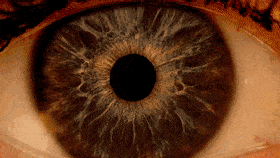
More of the brain is dedicated to vision than to hearing, taste, touch, and smell combined. Sight is, arguably, our most important sense.
Now lets go through complete structure of eye and how it enables us to see.
Vision is an incredibly complex process that works so well, we never need to give it much thought.
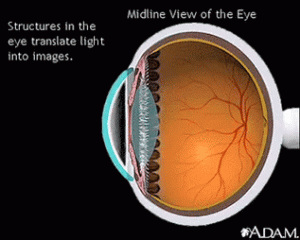
How Eyes Work
The work of the visual system can be summarized as follows: light enters our pupil and is focused onto the retina at the back of the eye. The retina converts the light signal into electrical impulses. The optic nerve then carries the impulses to the brain where the signals are processed.
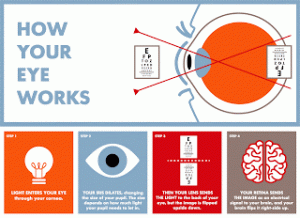
Anatomy of the eye
The tissues of the eye can be split into three types: • Refracting tissues that focus light • Light-Sensitive Tissues • Support Tissues
Refracting tissues that focus light

Light Sensitive Tissues (RETINA)
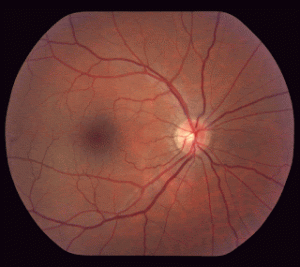
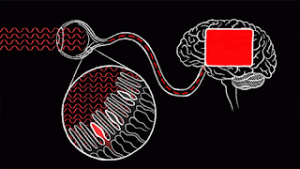
The retina is the innermost layer of the eye. It houses more than 120 million light-sensitive photoreceptor cells that detect light and convert it into electrical signals. These signals are sent on to the brain for processing. Photoreceptor cells in the retina contain protein molecules called opsins that are sensitive to light. The two primary photoreceptor cells are called rods and cones. In response to particles of light, the rods and cones send out electrical signals to the brain.
Support Tissues
Sclera: This is commonly referred to as the white of the eye. It is fibrous and provides support for the eyeball, helping it keep its shape.
Conjunctiva: A thin, transparent membrane that covers most of the white of the eye, and the inside of the eyelids. It helps lubricate the eye and protect it from microbes.
Choroid: A layer of connective tissue between the retina and sclera. It contains a high concentration of blood vessels. It is just 0.5 mm thick and contains light-absorbing pigment cells that help reduce reflections in the retina.
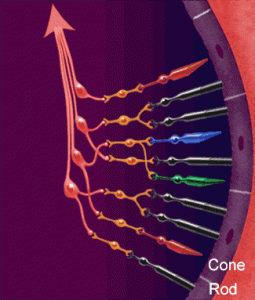
Learn More About Diabetes and Your Eyes Contact Vedanta Netralya at +91-9873518513, and setup appointment with Dr. Davinder Tyagi , a well known retina specialist in ghaziabad and the best eye specialist in Ghaziabad.
About Dr. Davinder Tyagi : Dr. Davinder Tyagi the best eye doctor in ghaziabad is an AIIMS alumini and eminent and high volumic senior Surgeon ( Retina and Cataract) in Ghaziabad western UP and NCR .He did his postgraduation in ophthalmology and ( Vitroretina training from Dr. R.P. centre, AIIMS (DELHI) . Dr. Davinder Tyagi started medical retina and retina surgery in 2007 after completing his tenure in AIIMS. To know more about him , visit http://vedantanetralyagzb.com/drtyagiprofile.html
#vedantanetralyagzb #eyecare #retina #cataract #ophthalmology #cataract #optometry #eyecare #eyehealth
https://in.pinterest.com/pin/793618765565040995/
https://www.facebook.com/besteyehospitalinghaziabad/
http://vedantanetralyagzb.com/drtyagiprofile.html
https://twitter.com/VNetralaya
https://plus.google.com/u/0/108230377193438469090
